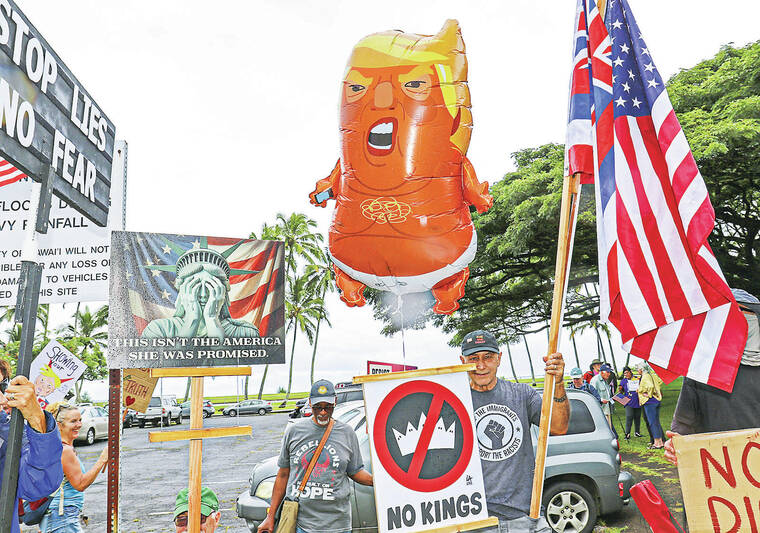On January 21, 2025, thousands across the United States participated in a series of protests against President Donald Trump, calling for accountability and an end to what they perceive as authoritarian governance. The demonstrations occurred simultaneously in major cities and small towns, featuring a diverse array of participants, including teachers, lawyers, military veterans, and families.
The events, known as No Kings Day, were organized at approximately 2,600 sites nationwide, building on a similar protest held in June. Protesters united under the slogan “No kings,” expressing their collective discontent with Trump’s administration, which they accuse of behaving like a monarchy. As attendees donned costumes, waved American flags, and carried signs with slogans like “I Pledge Allegiance to No King,” the atmosphere remained largely festive and peaceful.
In cities such as Washington, D.C., and Atlanta, crowds swelled into the thousands. Reports indicate that New York City alone saw over 100,000 demonstrators across its five boroughs. A rally in Chicago stretched over 22 blocks, showcasing the widespread nature of the protests. The events were organized by various progressive groups, including Indivisible and MoveOn.
Participants articulated a multitude of grievances, including immigration raids, federal troop deployments in cities, and budget cuts affecting essential services. Chris Scharman, a lawyer who attended a rally in Salt Lake City, emphasized the need for humane treatment of all individuals, stating, “We shouldn’t be debating the value of people.”
A notable presence of children and families marked many protests, demonstrating the intergenerational impact of the issues at stake. Bianca Diaz, a mother from Pittsburgh, attended with her daughter, who was dressed as an axolotl, to emphasize the importance of civic engagement. “I wanted her to witness this,” Diaz explained.
While the protests garnered significant public support, Republican leaders criticized the demonstrations, labeling them as a “hate America rally.” In response, Trump’s political team mocked the protesters on social media, sharing AI-generated images depicting the president in a crown.
Notably, the protests extended beyond the United States, with solidarity demonstrations occurring globally. In cities such as Prague, Vienna, and Berlin, crowds gathered outside U.S. embassies and consulates to voice their opposition to Trump’s policies.
The demonstrations were characterized by a palpable sense of urgency among participants. Marilyn Ricken, an 80-year-old retiree, reflected on the significance of the protests, saying, “This is how change happens.” In Chicago, Illinois Governor JB Pritzker addressed the crowd, urging them to reject a government with unchecked power.
Despite differing opinions within the crowd, the overall mood remained optimistic. Many attendees expressed a desire for change and a commitment to continue advocating for their rights. “Protesting is the only way to get our voices out,” said 17-year-old Libby Smith, who felt motivated to speak out against perceived injustices.
As the day unfolded, the protests illustrated a growing dissatisfaction with the current administration, uniting individuals from diverse backgrounds in a common cause. The movement’s momentum reflects the ongoing challenges faced by the Trump administration and highlights the importance of civic engagement in shaping the future of American democracy.
